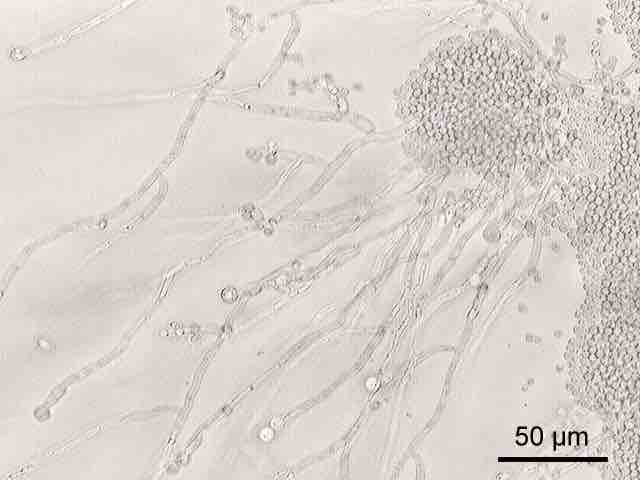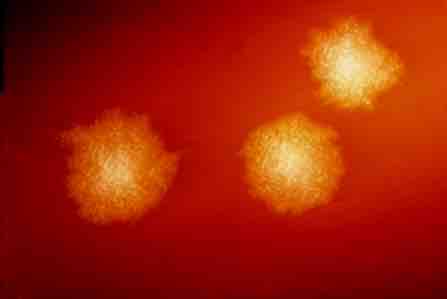Gut flora consists of microorganisms that live in the digestive tracts of animals and is the largest reservoir of human flora . In this context, gut is synonymous with intestinal, and flora with microbiota and microflora; the word microbiome is also in use.

Canidida albicans
Candida albicans, a dimorphic fungus that grows as a yeast in the gut. Microscopic image (200-fold magnification) of Candida albicans ATCC 10231, grown on cornmeal agar medium with 1% Tween80.
The human body, consisting of about 10 trillion cells, carries about ten times as many microorganisms in the intestines. The metabolic activities performed by these bacteria resemble those of an organ, leading some to liken gut bacteria to a "forgotten" organ. It is estimated that these gut flora have around 100 times as many genes in aggregate as there are in the human genome.
Bacteria make up most of the flora in the colon and up to 60% of the dry mass of feces. Somewhere between 300 and 1000 different species live in the gut, with most estimates at about 500. However, it is probable that 99% of the bacteria come from about 30 or 40 species. Fungi and protozoa also make up a part of the gut flora, but little is known about their activities.
Research suggests that the relationship between gut flora and humans is not merely commensal (a non-harmful coexistence), but rather a mutualistic relationship. Though people can survive without gut flora, the microorganisms perform a host of useful functions, such as: fermenting unused energy substrates, training the immune system, preventing growth of harmful, pathogenic bacteria, regulating the development of the gut, producing vitamins for the host (such as biotin and vitamin K), and producing hormones to direct the host to store fats. However, in certain conditions, some species are thought to be capable of causing disease by producing infection or increasing cancer risk for the host.
Over 99% of the bacteria in the gut are anaerobes, but in the cecum, aerobic bacteria reach high densities. Not all the species in the gut have been identified because most cannot be cultured, and identification is difficult. Populations of species vary widely among different individuals but stay fairly constant within an individual over time, even though some alterations may occur with changes in lifestyle, diet and age. An effort to better describe the microflora of the gut and other body locations has been initiated (such as the Human Microbiome Project). In 2009, scientists from INRA (France) highlighted the existence of a small number of species shared by all individuals constituting the human intestinal microbiota phylogenetic core. Most bacteria belong to the genera Bacteroides, Clostridium, Fusobacterium, Eubacterium, Ruminococcus, Peptococcus, Peptostreptococcus, and Bifidobacterium . Other genera, such as Escherichia and Lactobacillus, are present to a lesser extent. Species from the genus Bacteroides alone constitute about 30% of all bacteria in the gut, suggesting that this genus is especially important in the functioning of the host. The currently known genera of fungi of the gut flora include Candida, Saccharomyces, Aspergillus, and Penicillium. An enterotype is a classification of living organisms based on its bacteriological ecosystem in the human gut microbiome. Three human enterotypes have been discovered.

This photograph depicts Clostridium difficile colonies after 48hrs growth on a blood agar plate; Magnified 4.8X.
C. difficile, an anaerobic gram-positive rod, is the most frequently identified cause of antibiotic-associated diarrhea (AAC). It accounts for approximately 15-25% of all episodes of AAC.
Bacteria in the gut fulfill a host of useful functions for humans, including digestion of unutilized energy substrates, stimulating cell growth, repressing the growth of harmful microorganisms, training the immune system to respond only to pathogens, and defending against some diseases.